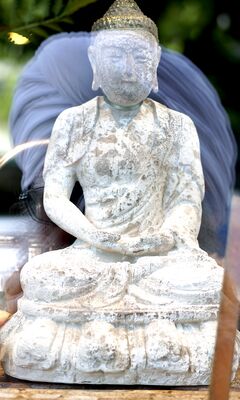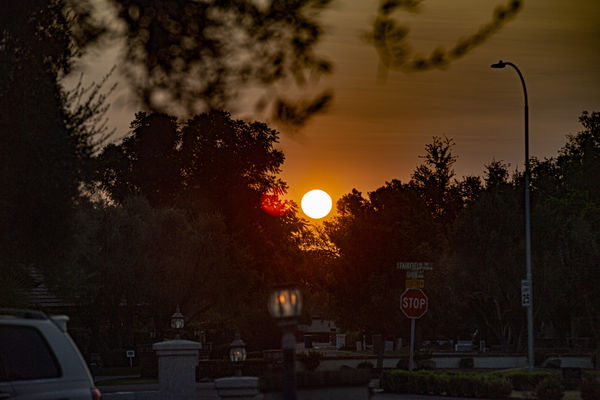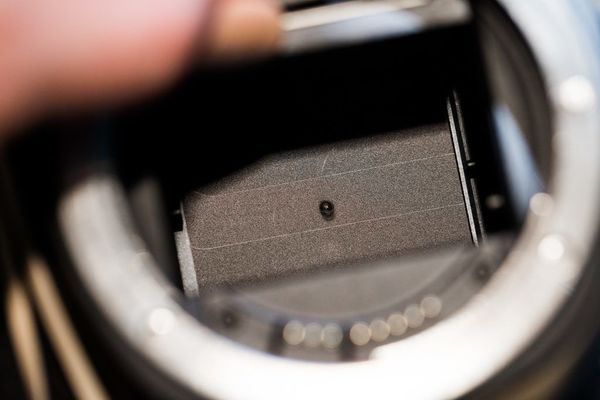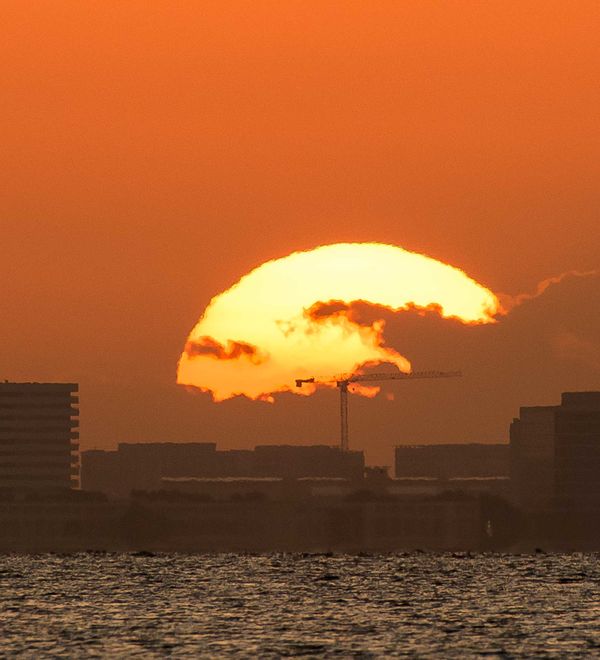Photographing the Sun
Sep 20, 2020 12:27:39 #
Unfortunately, the smoke/haze resulting from the West Coast fire disasters is that the Sun rises in the morning as just a big red ball that you can look directly into with no problem (eye damage). Will pointing the camera directly at the sun do anything to my sensors (SONY 6000 and 6300) and is there a way to get a proper picture of this unusual happening. Hopefully it won't last too much longer, but I'd like to try. Is a neutral density filter the answer. Any advice?
Sep 20, 2020 12:51:49 #
I don't think anything will happen to your camera. It's pretty much the same as sunset photos we've all seen. When the sun is close to the horizon, there is a lot more atmosphere to pass through than when it's overhead. I don't think an ND filter will do much except require increased exposure. As for exposure, that's going to require a few at different settings. Then, pick the best.
--Bob
--Bob
kpsk_sony wrote:
Unfortunately, the smoke/haze resulting from the West Coast fire disasters is that the Sun rises in the morning as just a big red ball that you can look directly into with no problem (eye damage). Will pointing the camera directly at the sun do anything to my sensors (SONY 6000 and 6300) and is there a way to get a proper picture of this unusual happening. Hopefully it won't last too much longer, but I'd like to try. Is a neutral density filter the answer. Any advice?
Sep 20, 2020 12:57:23 #
Sep 20, 2020 13:18:40 #
Sep 21, 2020 07:44:58 #
petrochemist
Loc: UK
kpsk_sony wrote:
Unfortunately, the smoke/haze resulting from the West Coast fire disasters is that the Sun rises in the morning as just a big red ball that you can look directly into with no problem (eye damage). Will pointing the camera directly at the sun do anything to my sensors (SONY 6000 and 6300) and is there a way to get a proper picture of this unusual happening. Hopefully it won't last too much longer, but I'd like to try. Is a neutral density filter the answer. Any advice?
IF you can look at it safely it won't damage your camera.
However I'm not at all sure it is safe to look at for any more than the briefest time. The Sun gives out lots of IR which is not reduced by smoke anywhere near as much as visual light.
At least your cameras don't have optical veiwfinders so you won't be magnifying that energy onto your eye while framing.
Sep 21, 2020 08:41:16 #
billnikon
Loc: Pennsylvania/Ohio/Florida/Maui/Oregon/Vermont
kpsk_sony wrote:
Unfortunately, the smoke/haze resulting from the West Coast fire disasters is that the Sun rises in the morning as just a big red ball that you can look directly into with no problem (eye damage). Will pointing the camera directly at the sun do anything to my sensors (SONY 6000 and 6300) and is there a way to get a proper picture of this unusual happening. Hopefully it won't last too much longer, but I'd like to try. Is a neutral density filter the answer. Any advice?
The sun could focus the rays of the sun like a magnifying glass onto your senor. Since it is an electronic viewfinder your eye should be fine but your sensor may not.
But if you must, use image stacking software to blend multiple images for more detail.
500mm or 1000 mm lens, iso 100-200, spot metering. Short shutter speed with aperture sweet spot
Only aim camera at the sun using a certified solar filter like a Hitech ND5.4 solar eclipse filter.
For exposure I always aimed my camera up 45% and to the right or left of the sun 45% for exposure readings.
Add an interesting foreground for contrast, like in the following photo.

Sep 21, 2020 09:41:02 #
I shot sunrise the other morning, f/6.3 1/500 and ISO 100. I have profiled my camera so I know I can shot 2 stop under and still have structure. Made adjustments in Adobe RAW. Both were shot with in seconds of each other. Bottom picture is before adjustments.
Sep 21, 2020 11:10:13 #
I do solar photography quite often. Modern sensors seem to be quite robust in this manner. Normally one uses a special filter, those made from mylar like film, can even just be attached by rubber bands. That said, never, ever, use a view finder, filters can fall off and glass can crack. For the 2017 eclipse I tried some glass filters, they did not seem as good as the film. Different filters give sun different looks, red or white. Look up solar filters, solar film, Baader film. Web has many videos etc. on making filters for cameras. If in a hurry, use mylar, but it can have pin holes which may distort the photo.
IR and UV can be a visual problem. Also, while the sensor may survive, other parts in the camera may melt or burn if left on the sun too long. Telescopes have burned, melted, etc. some just left out and sun moved into view.
If you have a view finder, cover it with tape or a view fonder cover, Canons often come with them.
Hope this helps.
IR and UV can be a visual problem. Also, while the sensor may survive, other parts in the camera may melt or burn if left on the sun too long. Telescopes have burned, melted, etc. some just left out and sun moved into view.
If you have a view finder, cover it with tape or a view fonder cover, Canons often come with them.
Hope this helps.
Sep 21, 2020 11:13:03 #
If you cannot look at the sun with your bare eyes do not do it with the camera.
Sep 21, 2020 12:58:55 #
I would be careful looking at the sun at any time. I've done some solar photography using a solar filter from Thousand Oaks Optical ( http://thousandoaksoptical.com/) and had good results with them. The attached photos are of a transit of the sun by the planet Mercury last November using one of the Thousand Oaks solar filter. I shot it with a Canon T6i and a Sigma 150 - 600 mm lens.
There's another solar eclipse coming up in a couple of years to keep in mind, too.
There's another solar eclipse coming up in a couple of years to keep in mind, too.
Sep 21, 2020 13:45:12 #
kpsk_sony wrote:
Unfortunately, the smoke/haze resulting from the West Coast fire disasters is that the Sun rises in the morning as just a big red ball that you can look directly into with no problem (eye damage). Will pointing the camera directly at the sun do anything to my sensors (SONY 6000 and 6300) and is there a way to get a proper picture of this unusual happening. Hopefully it won't last too much longer, but I'd like to try. Is a neutral density filter the answer. Any advice?
If you can look directly at the Sun without discomfort, you can safely take a picture of it.
bwa
Sep 21, 2020 15:21:07 #
billnikon wrote:
The sun could focus the rays of the sun like a mag... (show quote)
Your horizon is crooked ;-/
Tungin cheik . Slight tilt emphasizes the emotional engerny . Good one!
Sep 21, 2020 15:47:51 #
Camera sensors can indeed be damaged by pointing them at the sun. However if the intensity of the sun is reduced such as at sunset/sunrise, or due to smoke etc, then using a normal lens it will be ok. But if you are using using a long telephoto lens, even then, be mindful of the possibility of overheating the sensor.
Here is a fun Read:
https://www.engadget.com/2017-09-04-behold-the-cameras-destroyed-by-the-solar-eclipse.html#gallery=7674ac8e-afa1-3381-9909-14b8b85abbd9&slide=42588cdd-c2cd-3bff-94fa-40f904e70054&index=0
Here is a fun Read:
https://www.engadget.com/2017-09-04-behold-the-cameras-destroyed-by-the-solar-eclipse.html#gallery=7674ac8e-afa1-3381-9909-14b8b85abbd9&slide=42588cdd-c2cd-3bff-94fa-40f904e70054&index=0
Sep 21, 2020 18:17:04 #
Sunrise over Tampa
500mm
f9
1/320
ISO 640
I think that I would have gotten better results with a slower shutter speed and wide open.
500mm
f9
1/320
ISO 640
I think that I would have gotten better results with a slower shutter speed and wide open.
Sep 21, 2020 19:14:29 #
I have no authoritative knowledge on the subject; but have shot wide angle through telephoto directly into the sun with a Sony RX-100M3, Sony RX-100V and a wide range of Nikons from D200 through D850 with no detectable signs of damage what so ever.
JD750's damaged camera would give cause for concern. But I have to wonder what sort of shutter speed he was using to photograph that solar eclipse or if he had the shutter open and was using the camera's display as a viewfinder.
In my examples, the direct sun makes the shutter speeds very fast and I use the normal SLR viewfinder; so my biggest concern is to protect my eye-ball while looking through the viewfinder !!!
Viewing fast with a stopped down lens and a tripod helps with that. (Note: the tripod is not for slow shutter speeds but so you can accurately aim the camera using quick peeks through the view finder.)
JD750's damaged camera would give cause for concern. But I have to wonder what sort of shutter speed he was using to photograph that solar eclipse or if he had the shutter open and was using the camera's display as a viewfinder.
In my examples, the direct sun makes the shutter speeds very fast and I use the normal SLR viewfinder; so my biggest concern is to protect my eye-ball while looking through the viewfinder !!!
Viewing fast with a stopped down lens and a tripod helps with that. (Note: the tripod is not for slow shutter speeds but so you can accurately aim the camera using quick peeks through the view finder.)
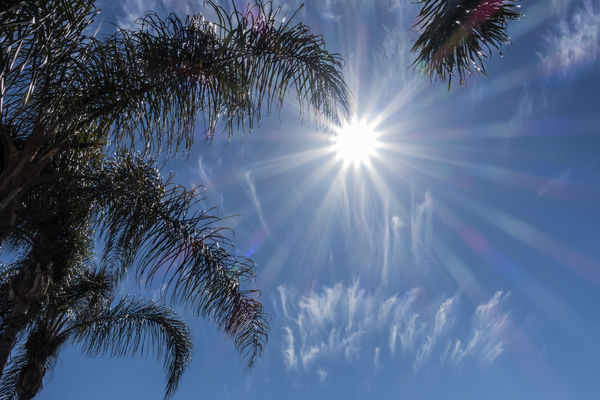
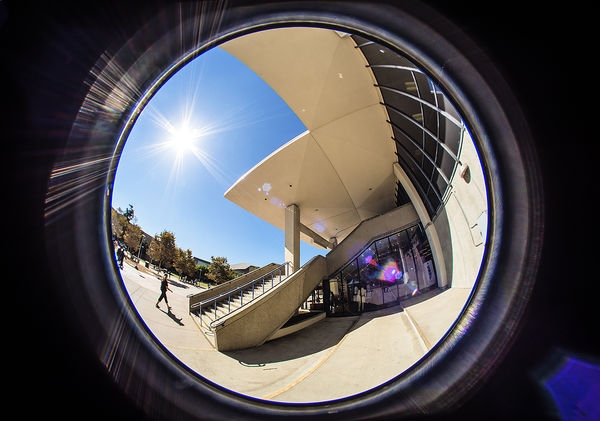
If you want to reply, then register here. Registration is free and your account is created instantly, so you can post right away.
